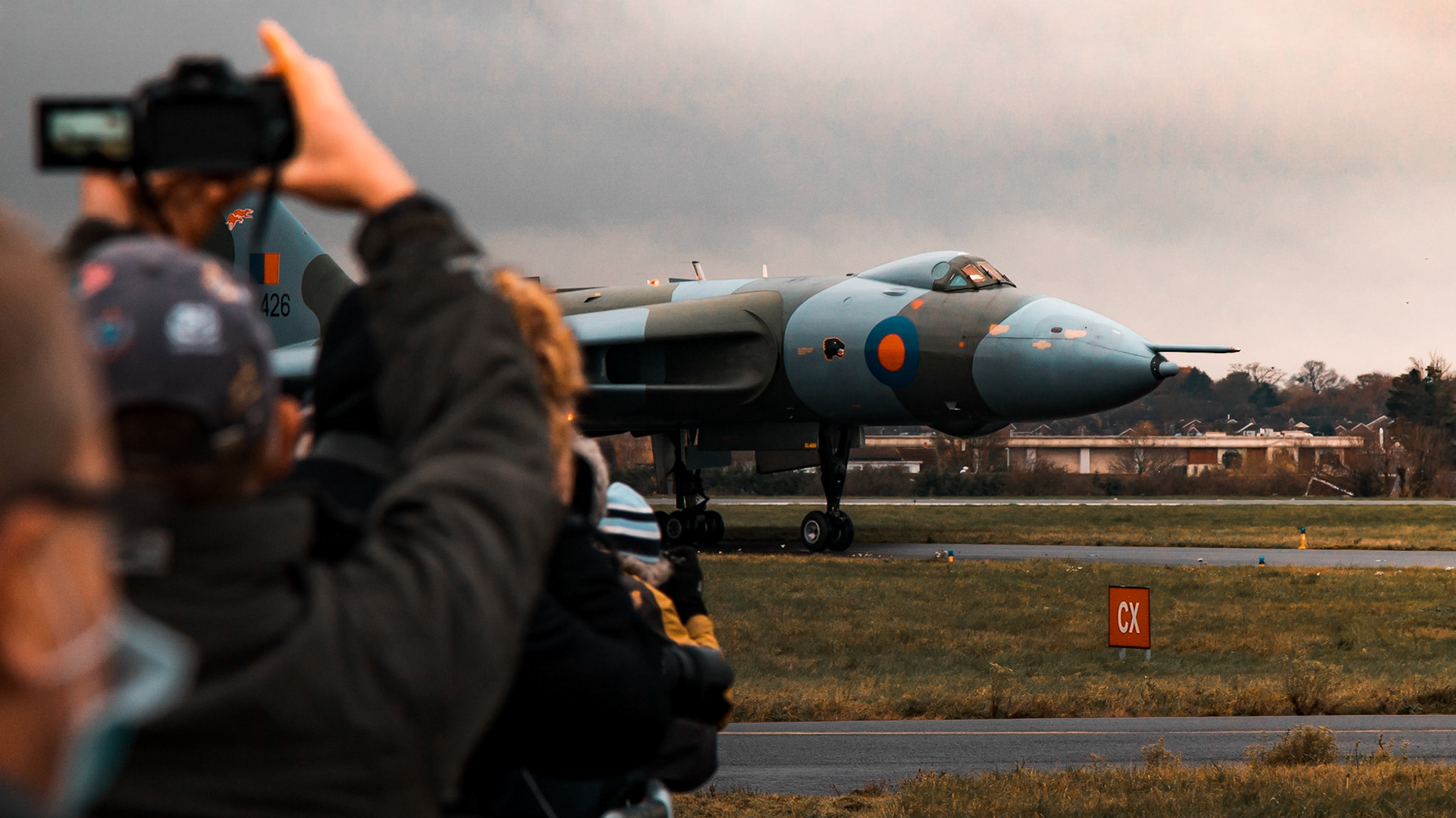Arrived at the south side of Southend Airport, behind the Vulcan Restoration Trust hangar, around 9:00am, we were the first in the car park. Gates opened at 9:30, and walking past the hangar, we were greeted with XL426 facing us, whilst the volunteers were busy prepping her for startup. Got some nice snaps of her parked up and then went to find a space on the fenceline ready for her taxi runs. The volunteers then pushed her back with a tug, and pulled her in front of the crowdline ready to start the four Olympus 301 engines, capable of producing 20,000lbf each. In total it took about 8 minutes to have her idling on all four, and she was given the all clear to taxi up to RWY23 on the north side of the airport. We were told on the tannoy by the Trust, that XL427 will be doing two taxi runs, with the first being a low power to check everything was in working order, and then the second run being the full power pass we were all excited to see. As she approached the end of the runway, we all waited in anticipation as she rolled onto the active runway. Watching her through my camera lens, she shifted forward as the pilots released the brakes, and shortly after she started rolling, the sound hit us. That howl as the air rushes into the huge air intakes once the pilots push the aircraft to 90% power, it echoed around the airport. It felt good to hear that sound again, and everyone was in awe at that moment. This howl lasted a good while until the pilots reduced the throttle preparing to slow the huge aircraft down, and popped the airbrakes out. She rolled past the hangar, and turned around on the underrun at the RWY05 end, and taxied up past the crowdline, ready to perform her second run. This time, when the throttle was opened up, the howl was a lot more prominent, and it was just such a memorable sight seeing her rolling down the runway with her airbrakes out. As she taxied back from the RWY05 side, she turned into the parking area in front of the hangar, and was marshalled right up to where she was parked in the morning, and subsequentally shut down all four Olympus engines. This was the closest I had been to an active Vulcan, and I'll never forget this event.
Later on in the afternoon, we decided to view XL426's second set of taxi runs from the golf course on the north side of the runway at Southend. We waited patiently as we could see her being prepped for engine startup in the distance, knowing that she would be taxiing straight toward us shortly. Once she was on the move, we waited for her to approach us before snapping some head on pics of her waiting for clearance to enter the runway. And when she started moving, we immediately put our earplugs in as things were about to get very noisy. As XL426 lined up on the runway we prepared ourselves for the wrath of those Olympus 301 engines, and when the throttle went up and the brakes released, the sound went right through our bodies as she disappeared down the runway, leaving a trail of jelly from the heat those engines produced. She did this once more, but got held up on the taxiway beforehand due to the amount of air traffic coming into Southend Airport, and her second run was more or less in the rain, which produced a few spots of standing water, later to be blasted away by the thrust of XL426. After her second run we watched as she taxied back to the hangar to be shut down and put away for the night. I'm so glad I was able to experience this event and capture some images along the way. I'll be updating this post with more images once I get round to editing them.
Thanks for reading!












